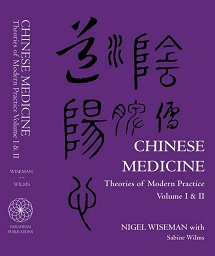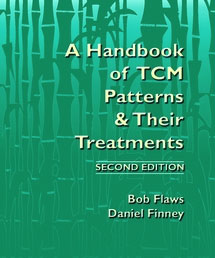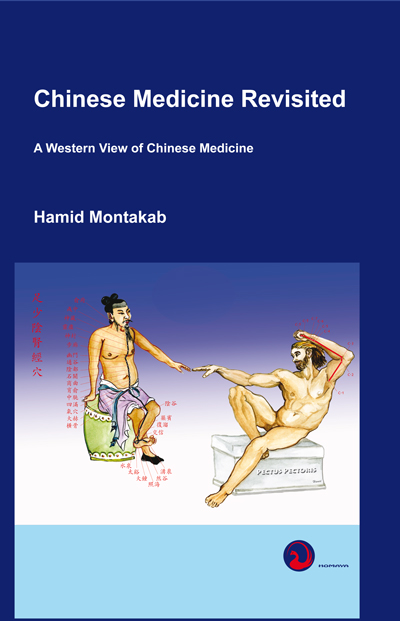- Therapeuten
- Profi
Chinese Medicine: Theories of Modern Practice 2 Vol Set
Set of Volume 1 and 2, incl. ebook
- Verlag: Paradigm Publ.
- ISBN: 9780912111834
- 2022, over 1000 pages
145,00 €
inkl. MwSt.
plus Versandkosten
Abhängig von der Lieferadresse kann die MwSt. an der Kasse variieren.
Lieferzeit: ca. 1 - 3 Tage
Beschreibung
Transform ancient knowledge in the modern practice
The book Chinese Medicine, Theories of Modern Practice by Nigel Wiseman and Sabine Wilms describes the foundational doctrines, physiology, pathology, diagnostics, and therapeutics of Chinese medicine at the same breadth and depth as the basic-theory textbooks used in the People`s Republic of China.
If you have ever wanted to know what a Chinese professor would say about a theory, pattern or clinical case this is the book for you. Built to enhance learning, it is ideal for self-study or to fill in the information missing from simplified texts.
Chinese Medicine: Theories of Modern Practice comes as two practical volumes, well below the price of less thorough books. The authors are addressing people who want to understand Chinese medicine from the Chinese viewpoint. It is also for anyone who requires a practical professional reference at the level of detail required in the professional courses taught in the People`s Republic of China. This is enhanced by an included eBook version that is easily searched.
This text adopts modern pedagogical features to ensure holistic learning.
Step-by-step presentation of information, often lacking in textbooks, takes the student effortlessly from the known to the unknown. Concepts are systematically explained at their first mention.
A holistic approach is applied throughout. Chapters on physiology of the qi, blood, fluids, bowels, and viscera include previews of pathology (major signs, patterns, and diseases). Similarly, pattern identification chapters include previews of treatment. In this way, students can relate whatever they are studying at any given point to diagnosis and treatment. Furthermore, the pattern identification chapters include reviews of the physiology and pathomechanisms crucial to understanding a condition clinically.
Throughout the book important points are bulleted for ease of memorization. This helps students to more easily find the information they are looking for and eliminates needing to use marker pens to highlight important points in running text.
Chinese and pinyin equivalents are given for all major concepts. This not only useful for students who know, or who are learning, Chinese but also shows that in Chinese these are concepts with specific definitions that require attention and learning.
Substantial indexes provide useful references. Three indexes on signs, patterns, and diseases are included for review and reference. Three further indexes on acupoints, medicinals, and formulas will connect students to the complex realm of treatment.
Cross-referencing between chapters and sections enables students to find information quickly.
Covers basic theories to pattern identification at the depth and breadth of Chinese language texts.
The authors forthcoming work, Chinese Medicine: The Ideas that Shaped It, offers much of the same material at a more general level.
Printed as two volumes for convenient carrying and use. Fairly priced.
Information is presented in memorable bulleted lists, copious overviews and reviews, tables, additional information, and figures.
Appendices for signs, diseases, patterns, acupoints, medicinals, and formulas for easy review and reference.
Accompanying eBook is readable on computers or tablets. Full eBook searchability with a clickable table of contents and cross-references, as well as a concept search facility.
Basic textbooks in Chinese are far more detailed than any current English-language textbook. Chinese Medicine: Theories of Modern Practice provides all the core information of Chinese language texts but avoids the Chinese tendency to overburden students with classical references. Many of the references mentioned in Chinese textbooks are not available in English translation and Chinese students are accustomed to a style of learning not common in the west.
Following the principles of knowledge acquisition, the text is presented in small, focused paragraphs and bullet lists that enable anyone to absorb information more efficiently. Chinese and Pinyin are included for the concepts discussed, not only to help students who are learning Chinese, but also to emphasize that the English terms for clinical details that are new to readers reflect the Chinese understanding. Frequent side displays provide concept explanations.
A vast amount of indexed material is included. This is usually not available in either Chinese or English-language texts. A detailed index is included to aid searchability. Notably, the accompanying eBook version provides unlimited searchability with a clickable table of contents, clickable cross-references, and a term search facility that is both more detailed and easier to use than a book index.
Overview: For students who are completely new to Chinese medicine, the Overview helps to form a general picture of the subject matter contained in the book. Readers with little knowledge of Chinese medicine will acquire background knowledge sufficient to orient themselves to the subject and to the text itself.
Qi, yin-yáng and the five phases: This chapter provides much more detail about the core ideas and their origins than other English-language texts. This puts English-speaking students nearer par with their Chinese counterparts who bring their linguistic and cultural knowledge to their study of Chinese medicine.
Bowels and viscera: Much more detail than is available in commercial English language textbooks, especially concerning the specifics of concepts. Previews of the major symptoms, patterns, and diseases associated with each organ and substance reinforces these links. Recognizing relationships and the metaphors that describe them in Chinese, helps students remember them. By not summarizing clinical details and using English words that reflect the Chinese sense of ideas, English-speaking students more readily learn the links between concepts and treatments. Students are able to relate the physiology to the clinical context of pathology.
In Chinese this is complex, inter-woven information with many fine distinctions. To help students gain an equivalent depth of knowledge, the text preserves these relationships in English. Keeping Chinese metaphors in English translations makes memorization easier by emphasizing the links among ideas. By repeating the physiology and pathology along with each organ description, those concepts become easier to remember.
Qì, blood, essence, and fluids: As with the bowels and viscera, the text provides copious information about pathology. In the Chinse language pathology, diagnosis and therapy are described with consistent terms. By using English words with the same consistency students are saved the effort of re-learning vocabulary as they move through each stage of the discipline.
Channels and network vessels: Although not as detailed as advanced Chinese acupuncture books, Chinese Medicine: Theories of Modern Practice provides as much detail as Chinese-language basic-theory textbooks.
Constitution: The text devotes a whole chapter to seven different classification systems discussed in Chinese-language textbooks, but rarely discussed in English. Constitution is of importance in gauging a patients susceptibility to specific diseases. Knowing which of a number of diseases or patterns are most likely empowers clinicians to more effectively individualize a patient´s treatment.
Causes of disease: The book provides the same teachings as Chinese textbooks. In addition, information about the patterns and diseases that are associated with each specific cause enhances clinical performance.
Pathomechanisms: Pathomechanisms are important because skilled practitioners do not mechanically treat patterns according to presenting signs. Rather, they see illness as a dynamic process occurring through time, with a root in the past and the patient´s constitution, and a likely direction into the future. Understanding pathomechanisms helps practitioners focus treatment on the root causes and to treat illnesses before they arise.
Four examinations: Much more information is provided than in other English-language texts, both in terms of the range of symptoms covered and the subtly of the clinical variations described. Because of the strict linking of Chinese to English, learning the entire four examination symptom set is simultaneously learning the actions and indications of both medicinal substances and acupoints. By using English terms that work at the same level of coordination, learners are saved memorizing the same idea by several different names.
Pattern identification: The four chapters on pattern identification provide as much detail as Chinese-language textbooks. To help students absorb the information, there are introductions to each section devoted to a substance (qi, blood, fluids) and each bowel and viscus (heart, lung, spleen, etc.). These introductions are as detailed as each of the individual patterns. They provide not only a review of physiological features, but also copious information about the associated symptoms and diseases. Furthermore, for each pattern, we include brief indications of typical treatments, including acupoints and medicinal formulas.
Prevention and treatment: This chapter describes the principles of treatment that generally apply to different therapeutic modalities, as well as the specific treatment methods of acupuncture, medicinal therapy, and dietary therapy. The acumoxatherapy section describes equipment used, acupoint categories, and needling methods. The medicinal therapy section describes the basic categories of medicinals and rules for their combination.
Indexes: Unlike most Chinese or English texts, the book includes a huge amount of indexed matter
Index 1: Signs lists the 320 or more symptoms from head to foot.
Index 2: Patterns summarizes the 119 disease patterns discussed in the book.
Index 3: Diseases describes the 130 diseases mentioned in the text.
Index 4: Acupoints lists all the acupoints of the channels and vessels and non-channel points (over 400 in total).
Index 5: Medicinals lists over 400 commonly used medicinals.
Index 6: Formulas lists over 400 commonly used formulas with their ingredients and use.
Autor
Bewertungen (0)
You must be <a href="https://www.naturmed.de/mein-konto/">logged in</a> to post a review.





Bewertungen
Es gibt noch keine Bewertungen.